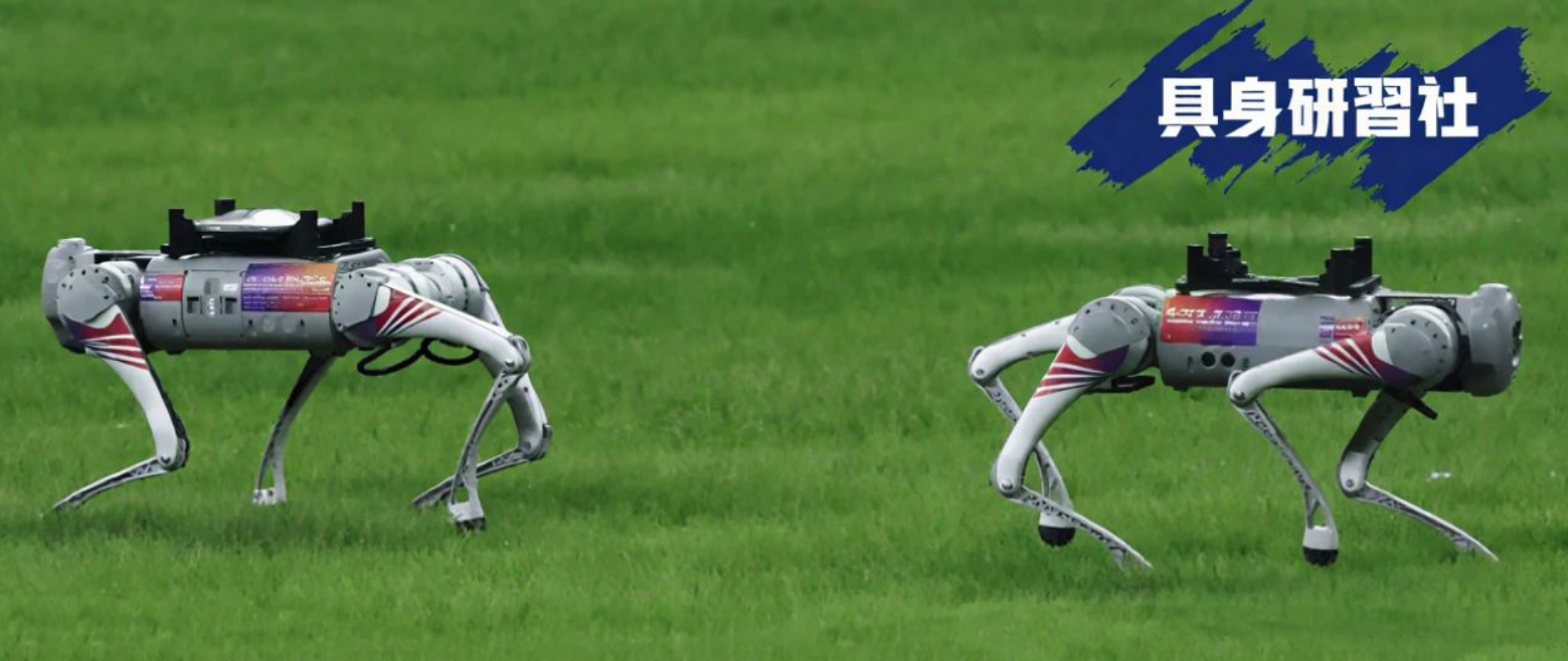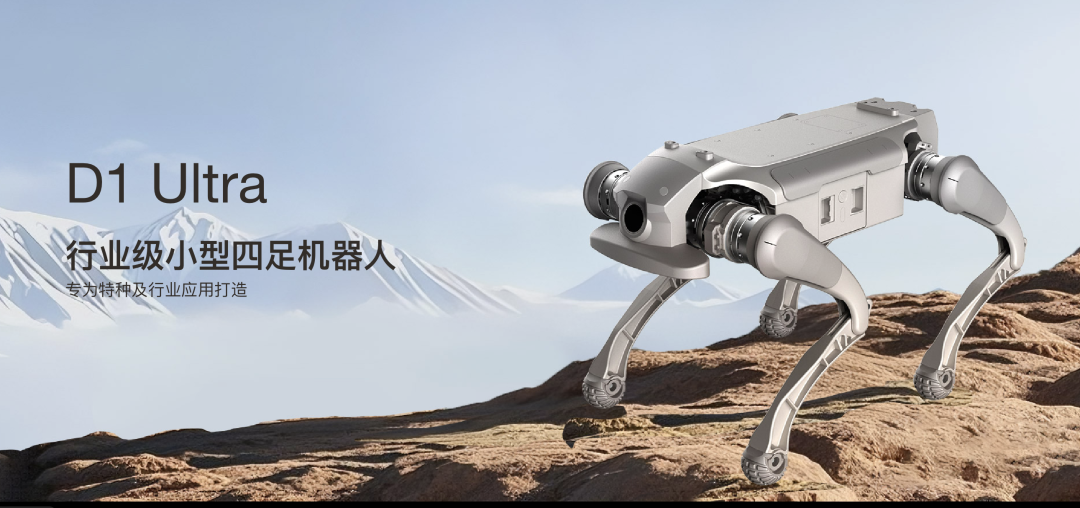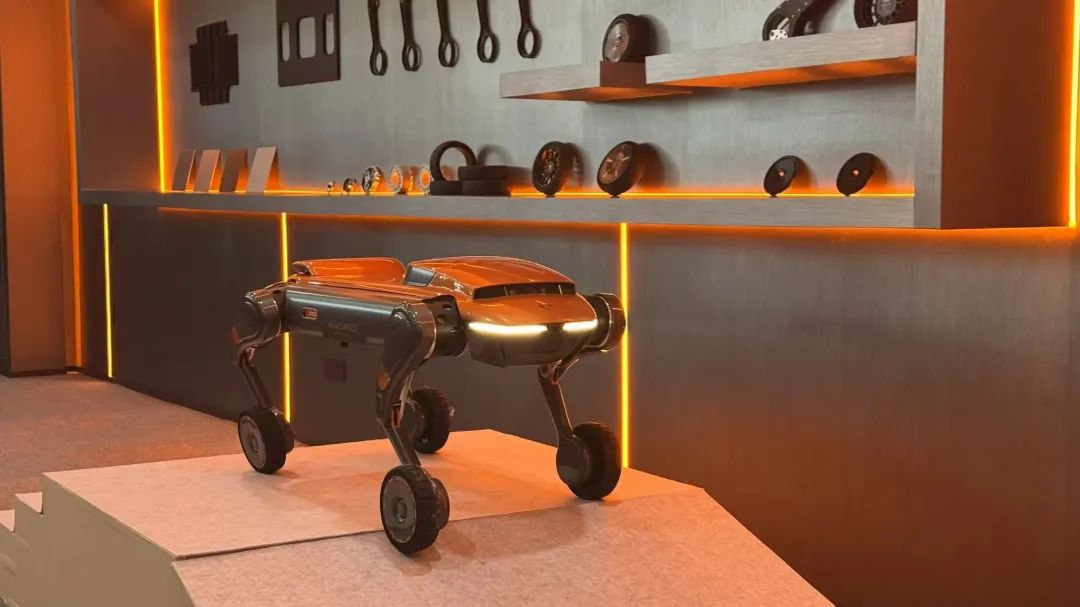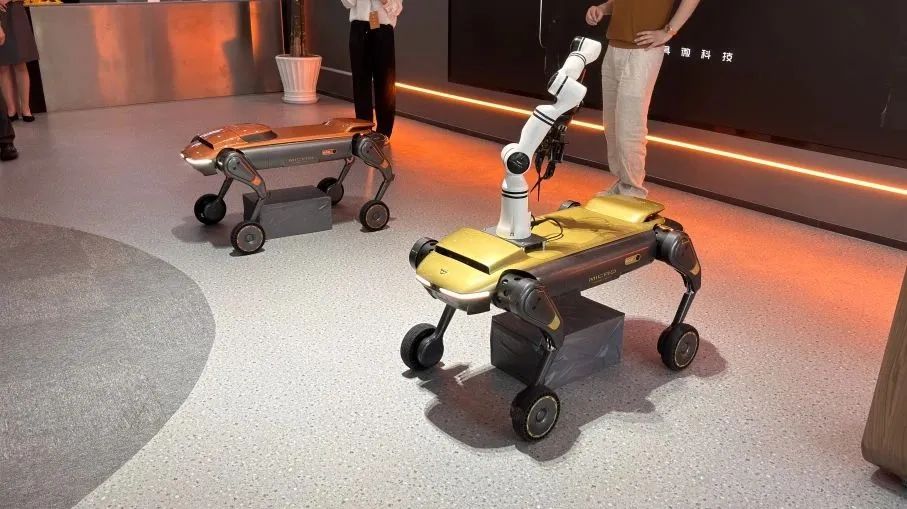Don't Miss Out on Robotic Dogs: Navigating Under the Shadow of Industry Giants
![]() 08/04 2025
08/04 2025
![]() 676
676

Before the robotic dog sector enters its "chaotic stage," one critical gap must be bridged: Unitree Technology holds a firm grip on approximately 70-80% of the market share. Regardless of Unitree's competitiveness, the fact that most current robotic dogs resemble Unitree's models suggests a strong association between the company and the sector. To a certain extent, Unitree Technology is inextricably linked to the robotic dog industry.
Editor: Di Xintong
The "duel between two dogs" between Unitree and CloudMinds is now a relic of the past.
On the side of humanoid robot manufacturers, Zhiyuan Robotics, Zhongqing, and others have entered the fray. Startups like Juwei Technology and Zhishen Technology have emerged in the robotic dog space. Consumer market players, such as Weilan Technology and Hengzhi Future, have risen rapidly. Additionally, "the first stock of collaborative robots," URobotics, has also entered the competition. The influx of diverse participants may propel the robotic dog sector, which has long maintained a stable landscape, into a period of "reshuffling."
The motivation for entering the robotic dog sector is clear, whether it be technical investment or commercial short-term returns and long-term value. It's a straightforward economic calculation.
First, robotic dog technology is relatively mature. With the open-sourcing of quadruped robotic dog technology, both veterans and newcomers can start from a high technological baseline. This lowers the entry barrier and enables them to produce competitive products for the market, securing commercial orders.
Second, robotic dogs have become "standard products" with immense potential for secondary development. Whether it's adding mechanical arms to enhance manipulation capabilities or wheels or more legs to improve off-road capabilities and expand application ranges, the future commercialization potential is vast. Even if they can't serve as productivity in real work positions initially, they can secure purchase orders in the research and laboratories of efficient, large factories.
Finally, from a commercialization perspective, robotic dogs' application scenarios are relatively homogeneous, primarily in industrial inspection, security, logistics inspection, etc., with mobility as their main selling point. While this is advantageous for the current stage of robotic dogs, it also reveals the limitations of early technology. As technology progresses, commercialization scenarios will naturally broaden, offering more potential for mining and in-depth development. The market increment will be sufficient to support several enterprises.
Thus, investing in robotic dogs offers a relatively high return on investment (ROI), and naturally, no one wants to miss out.
However, before players can initiate the "chaotic stage" of robotic dogs, they must contend with Unitree Technology's dominant market share of 70-80%. Regardless of Unitree's competitiveness, the fact that most current robotic dogs resemble Unitree's models provides a clue. To a certain extent, Unitree Technology is deeply entrenched in the robotic dog sector.
Taking food from the mouth of a fierce tiger may be the current challenge for the sector. Judging by the moves of industry players, an obvious strategy is not to compete head-on with giants but to attack under their shadow. This can be achieved by identifying niche scenarios or focusing on differentiated technologies, both of which can secure an ecological niche.
Quadruped robots are truly appealing.
Building quadrupeds has become a rare consensus among embodied intelligence enterprises. They can be broadly categorized into two groups: those that "return" to making quadrupeds after making humanoids and those that plan to make quadrupeds first when starting a business in the embodied sector. Behind this lies two distinct logics: the former sees it as a temporary detour in the long cycle of humanoid development, while the latter recognizes the immense potential in the quadruped field.
For the former group, actively "dimensionally reducing" after making humanoids, creating quadrupeds is the most immediate solution to their thirst for diversification.

Image source: Zhiyuan Robotics
First, the market education cost for quadrupeds is minimal. Quadrupeds are a transitional form that customers "understand and dare to order." Whether it's due to customers' decade-long familiarity with "robotic dogs" from Boston Dynamics or their perception of quadruped robotic dogs, especially wheeled ones, as "self-driving cars," the cognitive threshold is extremely low.
Furthermore, scientific research and government key customers have strong loyalty. Especially for humanoid enterprises that cooperate with universities and local investments, if their technology portfolio solely includes humanoid robots, they risk missing out on repeat purchase markets from these customers.
Second, the story valued by capital has shifted. It no longer pays for simple humanoid demos but demands to see "hematopoietic ability." Therefore, enterprises making humanoids must first tell a "profit story" before discussing a "future worth hundreds of billions." The high gross margin and substantial real orders for quadrupeds fill the "bottomless pit" of humanoid money-burning. It's understood that the gross margin of quadruped robots is generally high, with some enterprises maintaining over 60%.
Compared to humanoids with orders in the tens or hundreds, quadrupeds are currently the only form that can be shipped in scale and generate positive cash flow. Unitree serves as a prime example. Whether it's the shipment of 23,700 quadrupeds in 2024 or its ability to remain profitable after 2020, Unitree has set a precedent, proving that the path to quadruped commercialization is viable.
For startups, making quadruped robotic dogs not only allows them to tap into the embodied intelligence trend but also smoothly enters the "sweet spot" of "low entry cost, implementable scenarios, and easily acceptable products."

Image source: Juwei Technology
For instance, in 2018, MIT open-sourced Cheetah Mini, complete with a "full control stack + motor drive board," enabling latecomers to skip the stage of "how to keep the dog from falling over." ROS2 Navigation2, OCS2, LIO-SAM, and other full-set SLAM + full-body MPC are directly usable.
In a 2021 interview with Geek Park, Wang Xingxing stated, "Open-source technology from abroad has made it easier to build a robotic dog from scratch. What was originally a 60-point robotic dog can now reach 80 points."
When the overall technology matures, the proposition left for new players jumps directly to "productization," including exploring user needs and improving product industrial design. This explains why many founders of quadruped robot startups have a product manager background, such as Zhao Zhelun, co-founder of Vital Dynamics, and Liu Yulong of Zhishen Technology.
This also means that a mature technical background not only reduces R&D costs but also accelerates the pace of entrepreneurship, enabling scenario validation preparations in a relatively short period, directly pointing to the direction of future commercialization.
From a scenario implementation perspective, quadruped robots have penetrated numerous scenarios with rich real demand orders due to their all-terrain adaptability, modular load advantages, and industrial-grade reliability.
For example, on the B-end, Unitree Technology and CloudMinds have already entered the field of power grid inspection. Lingtian Intelligence, as the "first stock of emergency response," provides emergency robots for various disasters such as fires and floods. Shenhao Technology has created security dogs for the police system. On the C-end, "guide dogs," "companionship," "intelligent butlers," etc., are also real scenarios, representing a broader commercial space.
Overall, the development of AI has also brought revolutionary opportunities to robotic dogs. With the support of pure vision solutions, manipulation algorithms, and other technologies, robotic dogs no longer solely play the role of mobility and load-bearing but can also develop manipulation capabilities.
With low costs, vast potential, and diversified forms, robotic dogs, which are inherently sexy, have naturally become a "scarce product" in the eyes of all sectors.
We have only developed robotic dogs by "less than 1%".
Looking back, it seems challenging to pinpoint a clear time node, but we can clearly perceive that robotic dogs have "paused" for a few years.
This "pause" is multidimensional, with no significant technological breakthroughs and no new stories in commercialization landing. This isn't a problem with participating players but a temporary stable period against the backdrop of major technological advancements. After all, technology doesn't happen overnight, and changes in production relations also require time to precipitate.
Fortunately, with the influx of new players and major technological leaps, robotic dogs have finally ushered in new progress.
For example, Juwei Technology has identified outdoor hiking and camping scenarios. The company's fully autonomous following quadruped robot MOVENEWT1 achieves 1.5 times the power output at the same volume, with a battery life of up to 12 hours, enabling it to engage in outdoor sports for extended periods and at high intensity.
Simultaneously, it possesses local intelligent decision-making capabilities. Relying on its built-in high-computing power processing platform, it can complete environmental data analysis, task planning, and human-computer interaction responses without relying on external servers. In hiking scenarios without network coverage, it can generate navigation paths in real-time and activate the photography module. Moreover, it can be equipped with a refrigerator module to become a camping "mobile refrigerator." It's understood that it has already received cooperation intentions from several outdoor brands in Hangzhou.
In addition, the company has launched an embodied intelligence 4S store model, with the first store already open in Hangzhou. Furthermore, its customized services can also meet the needs of more consumers, such as providing 36 shell colors and material options like carbon fiber and titanium alloy, allowing users to design exclusive robots akin to customizing cars.

Image source: Juwei Technology
Beyond outdoor scenarios, there are also players like Zhishen Technology developing intelligent guide dog products and Shenhao Technology promoting scenarios in the field of smart agriculture, allowing robots to carry loads in tea mountains.
Beyond deeply mining scenarios, the broader industry impact is that the industry has begun to fight for real market share, transitioning from small skirmishes to large-scale shipments, ultimately driving down costs across the entire supply chain.
It's worth mentioning that the entry of cross-border players has also brought "something very new" to robotic dogs. For example, URobotics not only breaks the inherent form of quadrupeds, appearing in a more stable hexapod form, but also leverages its own genes to build a four-dimensional synergy of hardware-algorithm-scenario-ecology, bringing new solutions to the sector.
Taking a long-term perspective, based on current actions, two directions for future evolution have gradually become clear.
First, types are becoming more niche. At this stage, most robotic dogs have a wide range of applications, and "eating everything" is the shortest path to accumulating ammunition in the initial stage. However, it's by no means the final form of the sector landscape. As more players enter, the gradual niche of applications is an inevitable trend. After all, each player has different genes and injects different new momentum.
Humanoid robots have already provided typical cases. When companies such as UAI Robots and Qiling launched humanoid robots, they naturally catalyzed more niche humanoid robots based on their respective genes. For instance, Qiling, leveraging real data accumulated over years in hotels, created a humanoid robot that understands hotel service scenarios better.
Robotic dogs will also follow the evolution direction of humanoid robots, moving towards more vertical applications relying on the backgrounds of new players. For example, Kandi Technology has gained a foothold in the overseas market with off-road vehicles and has already collaborated with CloudMinds to develop caddie robotic dogs for golf courses. On the one hand, it has found a new niche for robotic dogs; on the other hand, it can demonstrate product strength through the penetrating power of vertical scenarios.
Second, on the basis of niche, robotic dogs also play the role of the "central nervous system." This perspective stems from the genes of embodied intelligence. The mission of embodied intelligence products is to serve as the carrier for AI to touch the physical world. Under this gene, embodied intelligence products such as robotic dogs can link with other AI software without hardware carriers to unleash ecological value.
A case can illustrate this more clearly. Taking the smart home scenario as an example, in currently mature smart home solutions, smart speakers often serve as the family AI "hub." Users issue commands through voice interaction, and the smart speaker controls curtain switches, lighting schedules, etc.
Nowadays, robotic dogs can take over the work of smart speakers, controlling home lighting, curtains, etc., after receiving human commands. They can also take care of children, the elderly, pets, etc., in the home through visual perception and autonomous navigation capabilities, and report emergencies in a timely manner. This isn't imaginary. Xiaomi created a product years ago. Its robotic dog Tie Dan is equipped with Xiaoai Classmate and can control smart devices in the home through voice commands like "Tie Dan, Tie Dan," such as turning on the TV or closing the curtains.
Robotic dogs exhibit immense potential for future commercial applications, and it is precisely in these imaginative spaces where Unitree Technology and CloudMinds have yet to firmly establish a definitive lead. This presents a golden opportunity for late entrants to the market.








